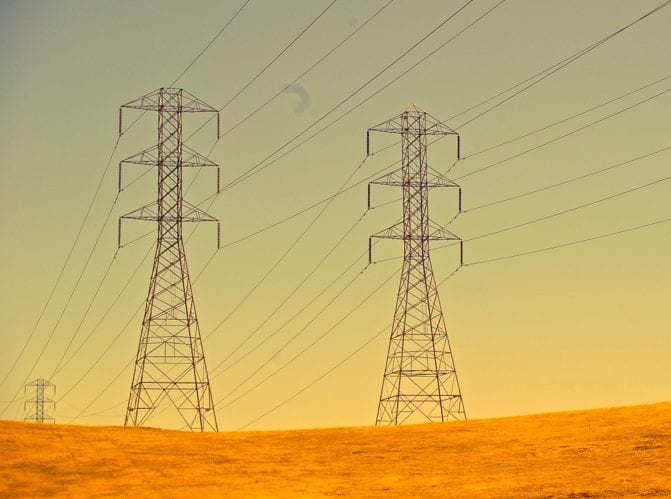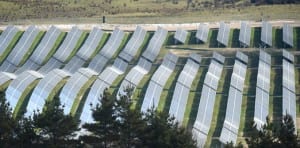State government-owned network operators – particularly those in Queensland and Western Australia – appear to be planning a new assault on retail electricity tariff to increase the amount of fixed charges paid by consumers.
The move is designed to protect the networks from declining revenues caused by lower demand – particularly that from energy efficiency initiatives and the dramatic and growing proliferation of rooftop solar.
Despite the removal of generous feed-in-tariffs in nearly all state jurisdictions over the last two years, rooftop solar continues to grow because it offers households the best means of reducing their electricity prices. As this CSIRO study found, Australians love solar because it lowers their energy costs.
Solar can be installed for around 12c/kWh, less than half what most pay for retail bills. Given that electricity retailers now pay little for exports back into the grid, the trick is to try and consume as much of the solar output on the premises.
But the utilities are looking to make this as unattractive as they can, because under current tariff structures, less consumption from the grid means less revenue. And having spent billions on network upgrades on the assumption of demand being about 20 per cent higher than it is, getting a return on that investment is now proving a challenge.
Mike Nahan, the new energy minister in WA admitted last week that demand for rooftop solar panels is growing at 20 per cent a year despite the withdrawal of the Government’s feed-in-tariff two years ago, and is a “game-changer for the industry.
“Here in WA, the rapid growth of PVs on rooftops is having a profound influence on electricity consumption and generation,” he told the West Australian last week in an article that appeared to presage the announcement of higher fixed charges.
The article said that WA’s energy chiefs are pushing for a change in the structure of bills to make customers pay more in fixed charges to make up the shortfall caused by the uptake of rooftop solar. At the moment, fixed costs, such as the supply charge, make up about 15 per cent of the bill.
This should not come as a surprise, because the Australian Energy Market Commission highlighted the issue earlier this year, when it noted that the $40 billion spent on network upgrades meant that electricity charges would rise no matter what, even if consumers reduced demand. “If demand is lower than forecast … then network prices … are likely to rise quicker than outlined in this report,” it noted.
That rise would come in the form of fixed charges, which means that even if a household is reducing consumption to minimize bills, or has installed solar, they will still be hit by rising electricity costs. The network operators want their money back, and the networks in most states are owned by the state governments.
Industry observers suggest WA may be working in lock-step with the Queensland state government, which last year doubled the standing charge on electricity for retail consumers, and appears to be contemplating having another go.
Research being compiled by solar industry analysts SunWiz points to the fact that nearly all the rises in Queensland retail bills for 2013/14 come from increases in fixed charges. The cost per kilowatt hour of electricity consumed barely moved, but the fixed cost per day doubled to 50c, or around $200 a year with GST.
Queensland is now looking at more changes, possibly to bring it in line with some of the fixed charges in NSW, which have been lifted to more than $1 a day, or more than $450 with GST.
Queensland energy minister Mark McArdle last week issued a statement saying that the grid was now being used in a way that was never imagined. But one encouraging aspect of McArdle’s statement was his noting that it was the largest energy users who were causing some of the most dramatic changes.
Most people in the industry, including in solar, recognize that tariffs need to be amended – but not in a simple substitution of energy costs with fixed tariffs. The amount that is used, and when, should also be part of the equation. This means that those with large consumption – either for air conditioning or pool pumps, or whatever reason, bear their share of the burden of the energy they use and the impact on the grid.
There is also a big push from the clean energy industry to argue the “balance of the ledger”, and recognizing the benefits of self-generation, particularly when it comes to solar. Rather than just seeing it as an “intermittent” source that reduces consumption from the grid, policy makers in the energy offices of both states are being urged to consider the benefits of solar – such as grid stability and reductions in peak demand.
Whether this makes the transition from the policy wonks to the politicians is yet to be seen, but the politics of solar – with 10-14% of households with it, and that amount again wanting it – may also bear attention.
As the sub-text from this fascinating story from the US illustrated, where Georgia Power finally yielded to mandating 525MW of solar power in the state, despite the utility’s preference for nuclear and other fossil fuels – the issue is being pitched as one of individual rights versus that of the utilities. It is a natural argument to be pushed by the conservative right, but it’s taken them a while to cotton on.
Alan Pears, professor at RMIT, wrote earlier this year that higher fixed charges are regressive because they also potentially undermine the economics of energy efficiency and other technologies that could be used to reduce or regulate demand. Reducing consumption is one of the principal policy measures proposed by the likes of the IEA to address climate change and the surge in global energy demand.
But Pears noted that the electricity industry – and its policy makers, sees a decline in electricity consumption as a threat to their industry’s viability, so they are working to oppose it.
Industry analysts also say higher fixed charges penalise low income and low user households, as well as solar users, as well as reducing the incentive for energy efficiency and to buy more efficient appliances.
The most obvious way to reduce charges to customers is to write down the value of the networks, seeing as they will not be used to the extent that was planned. This is a reality that has been faced by the telecoms and the media industry, and money others, as business operators realize that the value of the investment they made – in fixed line telephony or huge printing presses – has been sharply reduced by new technologies – mobile phones and the internet, or solar in the case of electricity.
This happens in many other industries, but not likely to happen in Queensland, where the government seems intent on preparing the networks it owns for sale. It is more likely to act to shore up the business model for these assets.
It’s unlikely to be challenged by the state’s pricing regulator, the Queensland Competition Authority, which earlier this year recommended special tariffs for solar users, despite the fact that it thought such measures would not reduce the cost of feed in tariffs, was unfair and possibly illegal. Despite all this, it suggested the tariff change because it would benefit the networks.
And therein lies the problem for these state governments – are they going to act in the interests of consumers, or of the networks that they own and operate? Hopefully, the economics, and the politics, of solar will decide in the favour of consumers.






